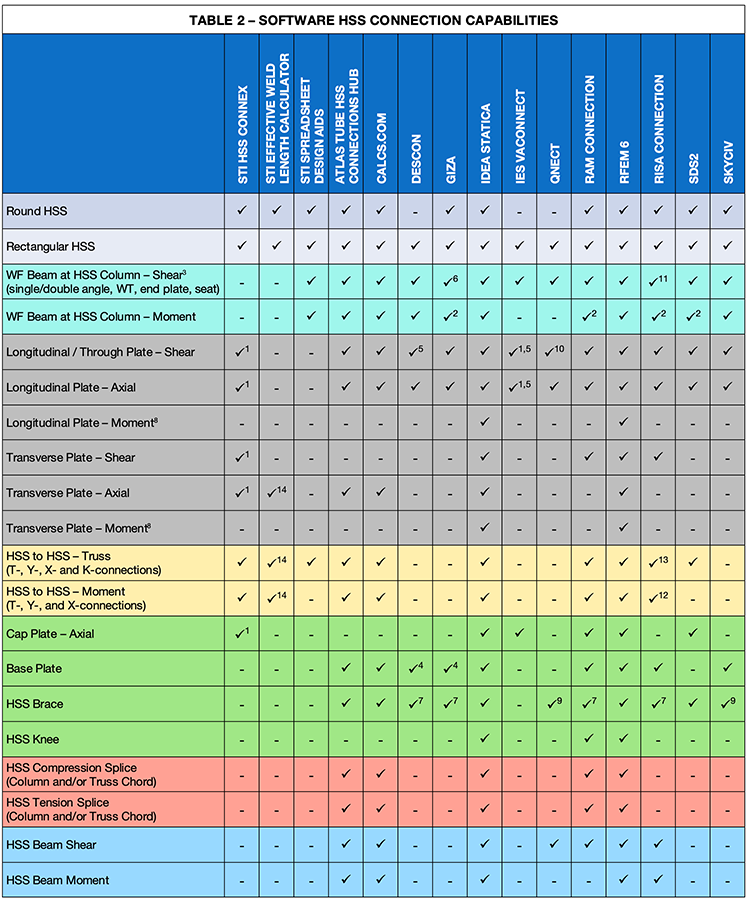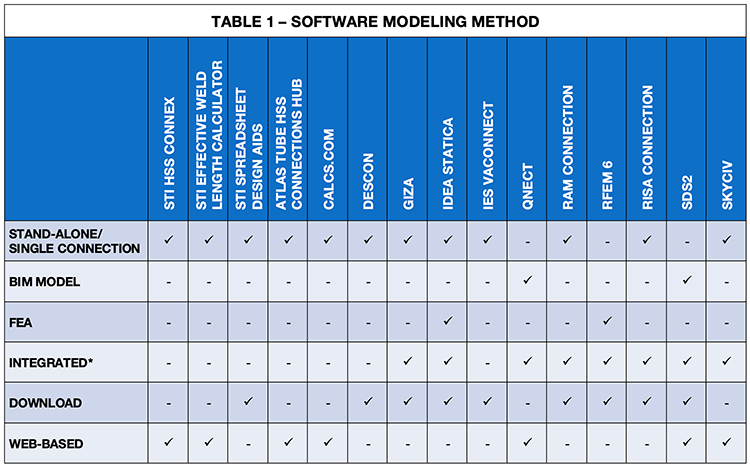HSS Connection Design Software Capabilities in 2025 by Steel Tube Institute
The latest article by the Steel Tube Institute explores available software design methods and compares current software capabilities and features across HSS connection categories. It provides a starting point for assessing connection software for HSS projects, helping engineers identify the solution that best meets their design requirements.
STI compared 15 different connection design software. The comparison table from the article outlines the connection design capabilities of each software option.
Source: Steel Tube Institute
Additionally, the following table lists how each software is accessed and whether it integrates with other software.
source: Steel Tube Institute
The article provides excellent confirmation that IDEA StatiCa is the ideal tool not only for designing HSS steel connections. Our software not only covers essentially all the fundamental needs of engineers working with HSS profiles, but also extends them further—for example, with the ability to design steel base plates and subsequently reinforce anchors in the concrete footing. Also, IDEA StatiCa integrates with other software; you are not tied to a specific global analysis software. Instead, you can keep your preferred tool stack.
However, hands-on experience remains the most effective way to determine which program suits the specific needs of each engineer.
Why IDEA StatiCa stands out for HSS connections
Hollow Structural Sections (HSS) present unique challenges in connection design: limited weld accessibility, complex geometries, and stress concentrations that are often beyond the reach of simplified design formulas. IDEA StatiCa addresses these challenges directly:
- Full 3D modeling of HSS joints: Model any HSS connection—whether single, double, or multi-branch—with full consideration of geometry, openings, stiffeners, and welds.
- Code-compliance: Verify against multiple international codes and standards, including AISC, Eurocode, and other codes, with a clear view of the limits of applicability.
- Advanced stress analysis: Employ Finite Element-based methods to capture local stresses, including torsion, bending, and interaction effects, which traditional checks often miss.
- Advanced base plate & anchor reinforcement design: Unlike many other solutions, IDEA StatiCa allows engineers to design and verify base plates and anchor reinforcement simultaneously with the connection, ensuring optimal load transfer and compliance with international codes.
- Integration with BIM and FEA workflows: Easily link with ETABS, STAAD.Pro, SAP2000, and other 30+ analysis and BIM tools, keeping your HSS design consistent across the project lifecycle. You are not limited to one solution; it integrates with many.
- Efficiency without compromise: Reduce trial-and-error iterations by instantly checking multiple configurations, weld types, and stiffener placements, saving time while ensuring safety.
In short, IDEA StatiCa transforms HSS connection design from a conservative approximation into precise, code-compliant, and verifiable engineering—helping engineers innovate without compromising safety or efficiency.
Read the full article by Steel Tube Institute
If you’re interested in this topic, be sure to register for the STI webinar on December 10, and learn how they analyzed a variety of HSS connection software programs, including FEA options, and identify common software HSS design capabilities and limitations.





